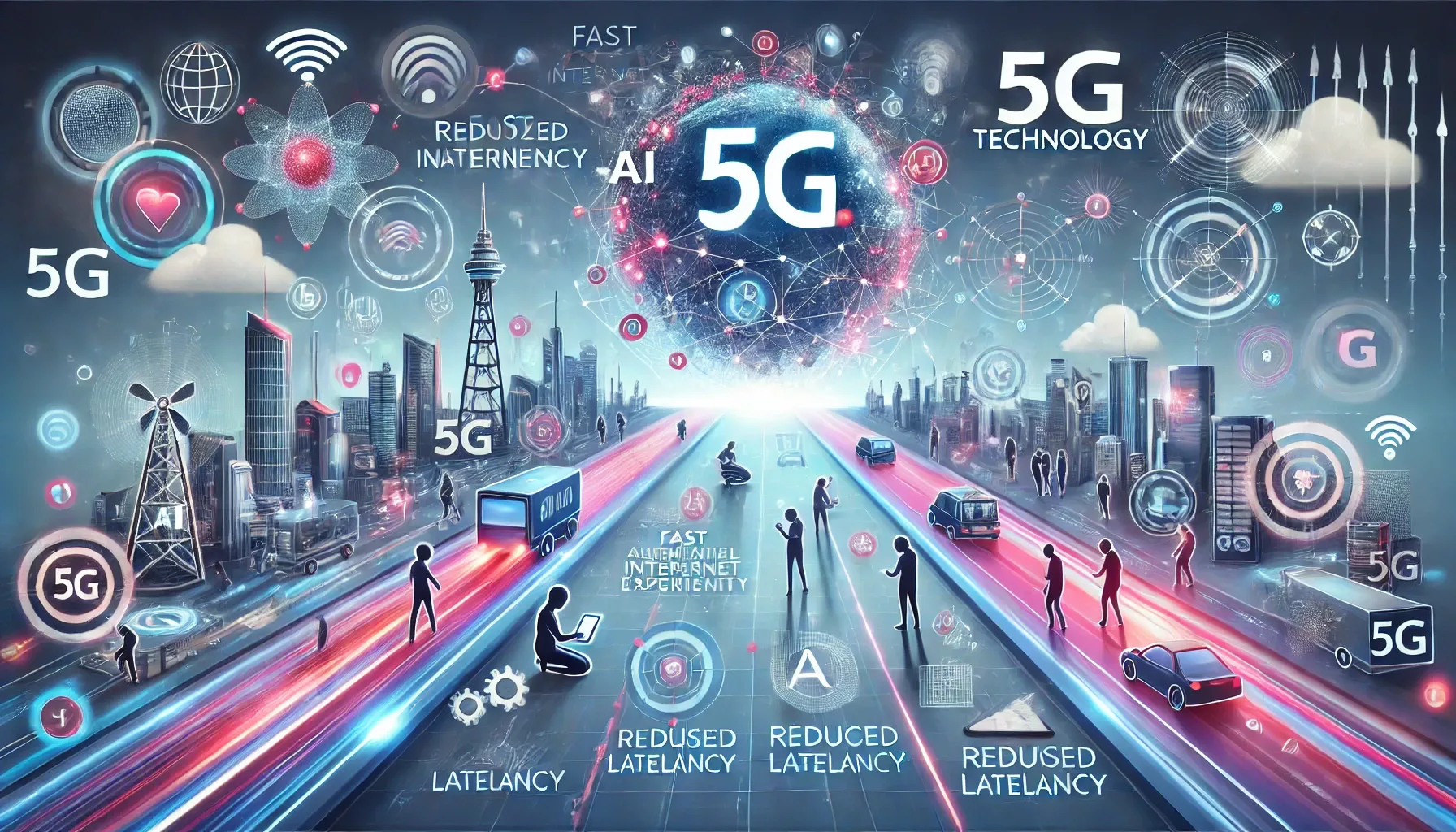The advent of 5G technology marks a significant milestone in the evolution of mobile networks, promising faster speeds, reduced latency, and enhanced connectivity. As web development and user experience (UX) are inextricably linked to the capabilities of network technology, the rollout of 5G is set to reshape the digital landscape in profound ways. This blog explores the impact of 5G on web development and UX, shedding light on the opportunities and challenges it presents.
What is 5G?
5G, or fifth-generation mobile network technology, is designed to deliver data at speeds up to 100 times faster than 4G. It operates on a higher frequency band, enabling a greater bandwidth and a more substantial number of connected devices simultaneously. This increased capacity means that users can download large files in seconds, stream high-definition videos without buffering, and enjoy immersive experiences with augmented reality (AR) and virtual reality (VR).
Enhanced Performance and Speed
One of the most immediate effects of 5G on web development is the potential for enhanced performance. Websites will load significantly faster, which is crucial for retaining users. Studies show that even a one-second delay in loading time can lead to a 7% reduction in conversions. With 5G, developers can leverage faster data transfer rates to create richer, more dynamic content without the fear of sacrificing performance.
Web developers can also take advantage of 5G’s improved speed to incorporate more complex features into their sites. High-resolution images, intricate animations, and interactive elements can be utilized without negatively affecting user experience. This opens the door for more engaging and visually stunning websites, enhancing the overall appeal and functionality.
Reduced Latency
Latency, the time it takes for data to travel from the source to the destination, is drastically reduced with 5G technology. This improvement means that real-time applications, such as video conferencing, online gaming, and live streaming, will experience significantly less lag. For web developers, this translates into the ability to create more responsive and interactive applications.
Reduced latency will also benefit IoT (Internet of Things) devices, enabling seamless communication between devices and web applications. For example, smart home applications can send and receive data in real-time, allowing users to control their devices effortlessly. This connectivity enhances user experience and fosters the development of innovative solutions that utilize the power of 5G.
The Rise of AR and VR
The introduction of 5G is set to revolutionize how augmented reality (AR) and virtual reality (VR) applications are developed and used. The high bandwidth and low latency associated with 5G networks enable these immersive technologies to function smoothly, making them more accessible for web developers.
Web developers can create AR and VR experiences that are more engaging and realistic. For instance, e-commerce websites can integrate AR features, allowing users to visualize products in their environment before making a purchase. Similarly, VR experiences can transport users to virtual showrooms or immersive environments, enhancing their shopping experience.
The impact of AR and VR extends beyond e-commerce. Educational platforms can offer interactive learning experiences, while travel websites can provide virtual tours of destinations. The possibilities are endless, and 5G will play a pivotal role in bringing these innovative ideas to life.
Increased Personalization
As web developers gain access to more data through 5G-enabled devices, the opportunity for personalized user experiences will expand significantly. With faster speeds and improved connectivity, websites can analyze user behavior in real-time and adjust content accordingly.
For example, a news website can tailor articles based on a user’s reading habits or preferences, delivering more relevant content. Similarly, streaming services can recommend shows and movies based on viewing history, creating a more customized experience. This level of personalization not only enhances user satisfaction but also fosters brand loyalty.
Challenges for Developers
While the potential of 5G is vast, it also presents challenges for web developers. One of the main concerns is ensuring that websites are optimized for a variety of devices, as 5G technology will be available on multiple platforms, from smartphones to smart home devices. Developers must ensure that their websites are responsive and function seamlessly across all devices.
Additionally, the increased reliance on real-time data can raise privacy and security concerns. Developers must prioritize data protection and implement robust security measures to safeguard user information. Compliance with regulations, such as the General Data Protection Regulation (GDPR), will be essential in building user trust and ensuring a secure browsing experience.
Future Trends in Web Development and UX
As 5G technology continues to evolve, several trends are likely to shape the future of web development and UX:
- Progressive Web Apps (PWAs): With 5G’s ability to provide high-speed internet, PWAs will become increasingly popular. They combine the best features of web and mobile apps, offering offline capabilities and improved performance.
- AI-Powered User Experience: The integration of artificial intelligence (AI) with 5G will enable websites to offer even more personalized experiences. AI can analyze user behavior in real-time and adapt content to meet individual preferences.
- Greater Accessibility: 5G can improve accessibility for users with disabilities. Developers can create more inclusive websites that cater to various needs, enhancing the overall user experience.
- Focus on Security: As more devices connect to the internet through 5G, the emphasis on security will grow. Developers must prioritize security measures to protect user data and maintain trust.
Conclusion
The impact of 5G on web development and UX is profound and far-reaching. From enhanced performance and reduced latency to the rise of immersive technologies, 5G presents exciting opportunities for developers to create innovative and engaging user experiences. However, it also poses challenges that require careful consideration. As we move towards a more connected future, embracing the potential of 5G while addressing its challenges will be key to shaping the digital landscape. The future of web development is bright, and 5G is a significant catalyst for change.




